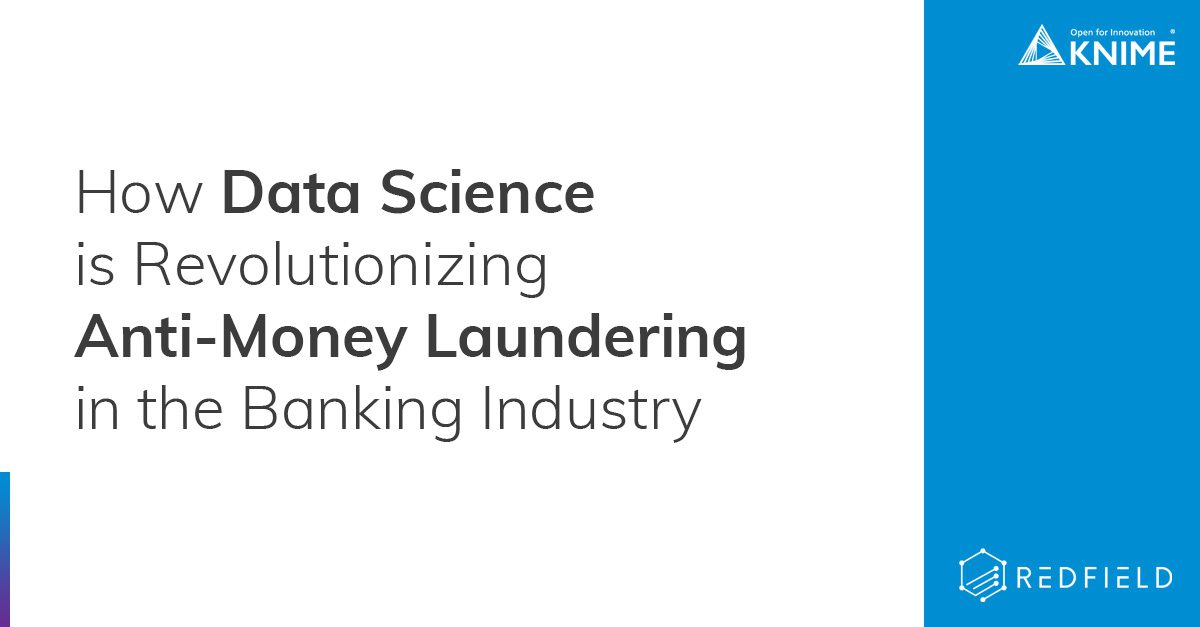- Posted by Viktoria Levitskaya
In today’s globalized and interconnected world, the risks associated with financial crimes have intensified for banks. Three significant factors have contributed to this heightened risk, necessitating a reevaluation of banks’ strategies in combating these threats.
The first factor stems from the exponential growth in cross-border transactions and the increasing integration of the global economy. While these developments have undoubtedly facilitated economic prosperity, they have also rendered banks more vulnerable to financial crimes. Criminal networks can exploit the complexities of international transactions, making it imperative for banks to bolster their defenses.
The second factor involves the evolving regulatory landscape, as authorities expand their focus from combating organized crime to addressing the growing menace of terrorism financing. Regulatory bodies continually revise rules and requirements, placing additional pressures on banks to adapt and stay compliant in the face of evolving threats.
The third factor relates to governments’ expanded use of economic sanctions as a foreign policy tool. Increasingly, individual countries and specific entities become targets of sanctions, placing additional compliance burdens on banks. To avoid severe penalties and reputational damage, banks must develop robust mechanisms to identify and mitigate potential risks associated with sanctioned entities.
In response to these challenges, banks have made substantial investments in personnel, manual controls, and systems designed to address immediate needs. Anti-money laundering (AML) compliance staff at major banks in the United States, for instance, has grown significantly over the past five years. However, the approach has often been fragmented, with resources allocated to areas with weaker controls and resulting in redundant compliance programs for different countries, product lines, and customer segments.
Moreover, banks have employed thousands of investigators to manually review high-risk transactions and accounts flagged through inefficient, exception-based rules. While such measures have been crucial in identifying potential risks, they have also been resource-intensive, costly, and prone to human error.
In light of these challenges, it is imperative for banks to rethink their approach to financial crime prevention. This article examines the need for a more holistic and integrated strategy, leveraging advanced technologies and intelligent systems to enhance the efficiency, effectiveness, and adaptability of banks’ compliance programs. By embracing innovative data science solutions, banks can fortify their defenses against financial crimes and navigate the increasingly complex landscape with confidence.

Problems the bank industry faces nowadays
Efficiency is a crucial element in the fight against financial crimes, particularly within the context of anti-money laundering (AML) programs. However, banks face several significant challenges that hinder the efficiency of their efforts. These challenges not only strain resources but also leave institutions exposed to potential risks and compliance violations.
1. Poor quality of data
One of the primary obstacles banks encounter is the poor quality of data, nonstandard data structures, and fragmented sources. Aggregating data from legal entities, subsidiaries, and vendors becomes a daunting task due to inconsistencies in data formats and accessibility. This difficulty hampers accurate and comprehensive customer information, making it necessary for banks to resort to time-consuming measures such as making costly customer calls every month to refresh KYC (Know Your Customer) documents. These calls aim to rectify incorrect or missing data in their databases, adding to the burden on compliance teams.
2. False positives
Analytical approaches for customer risk scoring and transaction monitoring also face challenges, primarily due to high rates of false positives. False positives occur when low-risk accounts or transactions are mistakenly flagged as suspicious, requiring extensive investigation. The resulting drain on resources diverts attention away from genuine high-risk activities. Attempts to address this issue, such as introducing new calibration tools and thresholds, often exacerbate the problem by generating even more false alerts.
3. Inconsistency in processes and standards
Inconsistency in processes and standards further complicates banks’ AML efforts. Processes such as customer identification, enhanced due diligence, and account monitoring and screening lack standardized approaches, leading to discrepancies in risk assessment and compliance requirements. The absence of agreed-upon definitions of risk and compliance violations hampers effective collaboration between financial institutions and creates uncertainty in meeting regulatory expectations.
4. Lack of a consistent reporting
Moreover, reporting suspicious activities and currency transactions is plagued by inconsistency. Banks sometimes produce an excessive number of reports, burdening regulatory bodies and straining resources. In other instances, the reporting may be inadequate, exposing banks to the risks of regulatory sanctions and reputational damage. The lack of a consistent reporting framework underscores the need for standardized protocols to ensure compliance across the industry.
5. Lack of integrated solutions
Fragmented systems and platforms pose further obstacles to efficiency. The absence of integrated solutions impedes the automation of critical functions like transaction monitoring and due diligence. Compliance teams are forced to spend a significant portion of their time collecting data and engaging in manual “stare and compare” sessions rather than focusing on investigative work. Streamlining and centralizing these processes would free up valuable resources and enable more effective identification of potential risks.
6. Increasing number of new products and services
The rapid introduction of new products and services, coupled with the rise of instant fund transfers and mobile payments, adds another layer of complexity to AML efforts. While these advancements offer convenience to customers, they often lack adequate KYC and AML safeguards. For example, “intelligent” ATMs that allow customers to deposit and transfer cash outside of banking hours introduce additional risks due to the absence of stringent customer identification protocols. Banks must adapt their detection and prevention mechanisms to address these evolving challenges effectively.
To overcome these challenges and enhance the efficiency of their AML programs, banks must adopt a proactive approach. This involves investing in advanced technologies, such as artificial intelligence and machine learning, to improve data quality, automate processes, and reduce false positives. Additionally, collaboration among industry stakeholders, standardization of processes and reporting, and regular engagement with regulatory bodies are crucial for building effective and efficient AML frameworks.
By addressing these challenges head-on, banks can strengthen their defenses against financial crimes, allocate resources more efficiently, and better protect their institutions and customers.
Data Aggregation in Anti-Money Laundering Programs: Enhancing Efficiency and Detection
Banks around the world face a common obstacle when it comes to data aggregation: the quality of customer information stored in their systems. Inconsistent data entry processes, outdated standards, and manual errors have resulted in a challenging landscape for financial institutions. This issue is particularly prevalent in countries such as the United States and the United Kingdom, which lack comprehensive nationwide identification systems.
To tackle this problem, banks are increasingly turning to innovative tools that enable them to aggregate and analyze poor-quality data. By doing so, they can avoid substantial costs associated with manual data structuring and cleansing, as well as the massive investments required to build central “data lakes.” One such tool is intelligent data platforms, which utilize machine learning or “fuzzy logic” techniques to process unstructured account and transaction data. These platforms provide banks with a comprehensive view of potential money laundering activities, empowering them to automatically validate customer identities, identify beneficial owners more efficiently, and establish connections between individuals and legal entities marked as high-risk.
The impact of these tools on manual reviews of accounts and transactions can be significant. Analysis conducted at a global financial institution revealed that nearly half of the flagged “suspicious” transactions would not have required investigation if the bank had been able to connect the data stored in its various divisions. By aggregating data effectively, banks can streamline their review processes and focus their resources on genuine cases of concern.
Consider a typical scenario:
a bank’s data infrastructure struggles to identify connections between numerous small cash deposits and wire transfers made by different customers to a common recipient. This type of activity, known as “smurfing,” involves breaking down cash deposits into amounts below the reporting threshold to avoid detection. Through analytics-driven data aggregation, banks can swiftly connect individuals engaging in smurfing to the same geographic location, behavioral patterns (transaction types, frequency, and sequence), and destination accounts. Moreover, these tools enable banks to intervene early in the process, preventing laundered amounts from accumulating.
By adopting advanced data aggregation techniques, banks can overcome the challenges posed by poor data quality. These tools not only enhance efficiency by reducing manual reviews but also bolster the effectiveness of anti-money laundering efforts. With a more comprehensive and accurate view of customer data, banks can stay ahead of potential risks and safeguard their operations, while ensuring compliance with regulatory requirements. Embracing intelligent data platforms and analytics-driven solutions is a crucial step for financial institutions in the ongoing battle against money laundering.
The Redfield Solution
Redfield is a cutting-edge provider of advanced analytics solutions specializing in anti-money laundering and fraud detection for the banking industry. Our expertise lies in leveraging the power of machine learning and artificial intelligence to develop highly accurate and efficient models for identifying suspicious financial activities. By analyzing vast amounts of transactional data, Redfield enables banks to proactively detect money laundering schemes and fraudulent activities, minimizing risk and protecting their customers’ assets.
With a deep understanding of evolving regulatory requirements and industry best practices, our solutions offer real-time monitoring, anomaly detection, and predictive analytics, ensuring financial facilities can stay ahead of emerging threats and maintain compliance standards.

